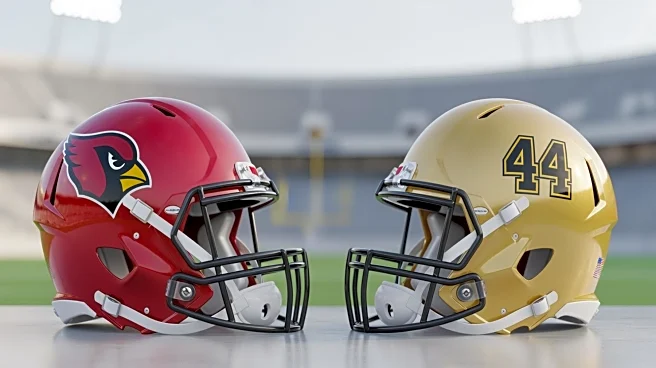What's Happening?
USC's third-string quarterback, Sam Huard, executed a successful fake punt against Northwestern by wearing a No. 80 jersey, typically worn by punter Sam Johnson. This strategic move was legal as Huard was listed
under the number for this specific game, deviating from his usual No. 7. During the second quarter, Huard joined the punt team and completed a 10-yard pass to Tanook Hines, extending USC's drive, which culminated in a touchdown run by Jayden Maiava. The play caught Northwestern off guard, showcasing Huard's ability to adapt and perform under pressure. Huard, who comes from a family of NFL quarterbacks, leveraged his skills to contribute significantly to USC's gameplay.
Why It's Important?
This strategic play highlights the innovative approaches teams are adopting in college football to gain competitive advantages. By utilizing players in unconventional roles, teams like USC can surprise opponents and potentially shift the momentum of a game. The successful execution of such plays can influence coaching strategies across the league, encouraging other teams to explore similar tactics. For USC, this play not only contributed to their victory but also demonstrated the depth and versatility of their roster, which could be crucial in their pursuit of higher rankings and championship aspirations.
What's Next?
Following this game, USC may continue to explore unconventional strategies to maintain their competitive edge. Other teams might analyze this play to develop counter-strategies or adopt similar tactics. As the season progresses, the impact of such innovative plays could lead to changes in how teams prepare for games, potentially influencing recruitment and training practices. Additionally, the success of players like Sam Huard in unexpected roles could lead to increased opportunities and recognition within the team and the broader college football community.
Beyond the Headlines
The use of players in unexpected roles raises questions about the evolving nature of college football, where traditional positions and roles are increasingly fluid. This trend could lead to a broader discussion on the adaptability and versatility required of athletes today. Moreover, it highlights the importance of strategic thinking and creativity in sports, which can transcend conventional boundaries and redefine gameplay dynamics.













